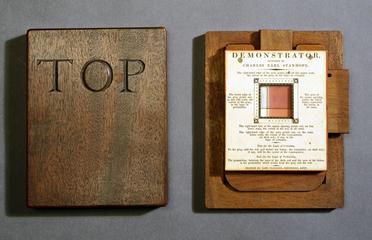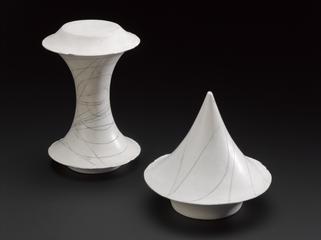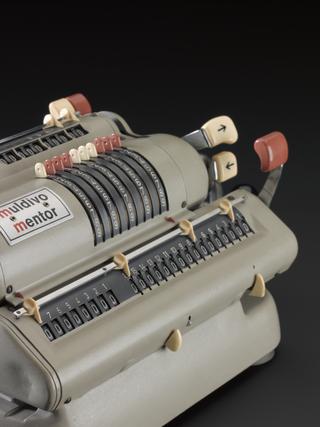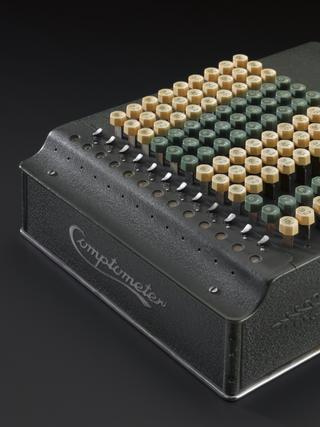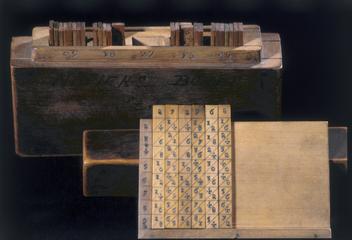
Harmonograph by Newton, 1909.
- maker:
- Newton and Company Limited

Harmonograph, by Newton & Co., two pendulums on 3 legged wooden stand, extension with a sliding ball for upper end of one pendulum, two heavy sliding weights with screw clamps and extra smaller weights, glass writing pen
Harmonograph by Messrs Newton and Co.1909. The Harmonograph was originally invented in the 1870's as a means of analysing vibrations, and was particularly useful for the study of sound. By the time of this example, it was regarded as just a scientific toy for drawing patterns. The pen and drawing table are mounted on pendulums and are set swinging at right angles to each other. The pen is lowered carefully to the table and traces out the resulting combination of the two vibrations. The pendulums can be made to swing more quickly or slowly by altering the number and position of the weights.
Details
- Category:
- Mathematics
- Object Number:
- 1909-192
- Materials:
- brass (copper, zinc alloy), wood (unidentified), mahogany (wood), cast iron, textile, paper (fibre product), ivory, glass and rubber (unidentified)
- Measurements:
-
overall: 1180 mm x 660 mm x 430 mm,
- type:
- harmonograph
- credit:
- Newton and Company Limited

